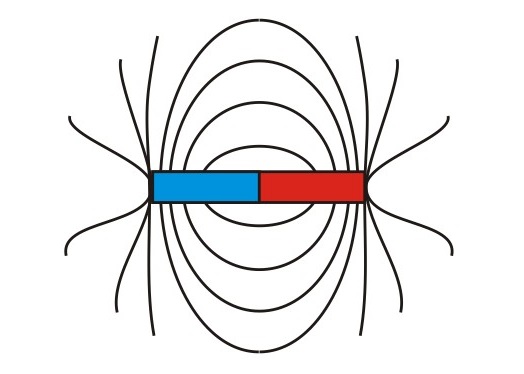Measurement of coating thickness
Your partner for Magnetic Field Meters / Gaussmeters |  |
Precise measuring devices for magnetic fields, magnetic flux and residual magnetism |
The coating thickness measurement deals with the determination of the layer thickness of coatings on surfaces. Layer thickness in the technical sense, is the material thickness of one or more coatings on a substrate. A coating may be of organic origin, such as a lacquer layer, or inorganic such as the metal layer of a galvanizing process.
List-Magnetik devices use two of the non-destructive testing (NDT) techniques, the ISO 2178 magnetic induction process, and the ISO 2360 eddy current process. The magnetic inductive method is used when the substrate itself is magnetizable (steel or iron). The eddy current method comes into play when the substrate is at least electrically conductive (other metals such as aluminum).
Calibration
List-Magnetik devices are factory calibrated and do not necessarily need to be calibrated by the user. An exception is when measuring on curved surfaces or on different base materials. Here, according to ISO 2178, a two-point calibration should be performed on an uncoated same object.
Fields of application for coating thickness gauges
Quality assurance in the painting process
- Compliance with minimum paint thickness
- Optimization of material usage
Quality assurance with galvanic coating
- Galvanizing, chrome plating on steel
- Copper coated steel gravure rolls
Quality assurance in anodizing aluminum coatings
Quality assurance for rubber coatings of metal
Car experts
- Is the paint original or after repainting?
Probes for coating thickness measurement
You will find a variety of probes to suit your specific requirements. Please note: The combined oscillating probe is designed for using both measuring techniques. You can work with both methods on all metals, with automatic detection of the substrate. The 90° swivel-mounted probe allows you to measure even in the most difficult-to-reach corners and openings. All our coating thickness gauges are "Made in Germany".
Range of application of List-Magnetik Coating Thickness Gauges
- Measurement of a non-magnetizable layer via steel or iron (FE metal)
- Measurement of a non-metallic layer over a non-ferrous metal (NFE metal)
- Measurement of a non-metallic layer over galvanized steel (combination of FE and NFE metal) with the duplex measuring method of the MEGA-CHECK Master
- Measurement of rough uneven layers with the scan measurement method of the MEGA-CHECK Master
FE base material
On iron and steel (FE) you can measure all non-magnetic layers such as paint, paint, plastic, enamel, rubber, ceramic and galvanic layers.
NFE base material
Non-ferrous metals (NFE) such as aluminum, brass, bronze, zinc, lead, copper or non-magnetic stainless steels can be used to measure all non-conductive layers such as paint, paint, plastic, anodized rubber.
We focus on these techniques of coating thickness measurement. Therefore, unfortunately we can’t offer any equipment for coating thickness measurement over ceramics, glass or plastic.
With these layers the devices of List-Magnetik can’t be used
Due to base material
- Non-metallic base material such as plastic, glass, GRP, carbon, ceramic
- Strong magnetic base material
Due to layer material
- Nickel layer on steel because nickel itself is magnetic
- NFE layer based on NFE, e.g. galvanized aluminum, silver / gold on lead, because eddy current technology does not detect any difference between the base and the layer
- Wet or soft layers that would be altered by the placement of the probe
Due to the geometry
- thin layers below 3 μm
- layers on thin base material less than 0.5 mm
- small contact surfaces under radius 2mm (FE) or 6mm (NFE)
- arched base under an outer radius / convex of 1mm (FE) or 6mm (NFE) and under an inner radius / concave of 6mm (FE) or 38mm (NFE)
Due to the environment
- not at temperatures below 0° C due to electronics
- not at temperatures above 50 ° C, the probe could be damaged
- not with eddy-current method under water, as water is conductive
Remote-controlled measurement without human intervention is not possible.
Click here for our coating thickness meters






